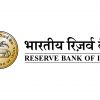RelevantA founder Jitendra Agrawal shares deep insights about RPA in insurance:

Manoj Agrawal: Can you describe an exceptional RPA implementation in insurance that you have seen?
Jitendra Agrawal: Generally, RPA implementation in any organization begins with selecting a ‘simple’ process and take the proof of the concept route to test whether the RPA technology works for them and also it is easy to develop, deploy and scale. The initial success on this may take the organization to drive RPA projects largely within operation functions with few deployments in support functions. ROI (cost and revenue) is critical to business and that is the lens through which most organizations evaluate and select the projects. Unfortunately, they end up missing the big opportunity to impact metrics that are critical to customers and to risk.
A leading insurance company sensed hyper automation as a disruptive and workplace transformation opportunity to re-imagine the business processes and streamline the value chain with introduction of frictionless journeys for NB, PS, Persistency, Payout and Claim processes. The enabling and support functions – HR, IT & Accounts – became lean and efficient with re-engineer the working architecture from EOD and month end volume surges to FTE independent robust and scalable processes. They made RPA as a new way of process design and made the bot factory a strategic agenda. This led to establishing center of robotics excellence and introduction of Super Bot, a tool to monitor real time adherence of the bot’s performance as a command center. This virtual supervisor creates interventions and controls individual processes and bot’s output.
Further going beyond the back office with RPA, the whole knowledge management of the organization’s product, policy, process, people and systems are made available on the fingertip as Q&A. This enabler on the mobile, desktop, laptop of the user helps in prospecting to sale, pre-sale to during sale, post sales to servicing needs of customers, financial consultants, distribution & ecosystem patterns and employees by responding to any of their queries in less than 6 seconds. Not only does this enhance experience among all the user types, but it also creates a ‘zero distance’ between the front line and the back office.
In what ways has maturity of RPA technology improved?
RPA as a technology has grown in multiple ways with growth in demand for accelerated pace of deployment. Organization that used simple RPA licenses are now using multi-thread licenses that can manage multi-tasking of transactions from different processes with higher speed, has robust built and multi option for hosting capability along with cloud integration, easy ready plugins, accelerators, low code features, ability to manage remote development, service and deployment, etc.
Apart from these, new straight through process journeys are getting build as process flow, thanks to hyper automation capability. A bot not only addresses simple tasks viz extraction, calculations, comparison, corrections, etc, but it can also read, index, extract and add different value from the documents/images with ICR/OCR capability, process email response, share responses in multiple channels, do cognitive decision making on complex processes with LLM features to add to the versatility, etc.
What fix do you recommend for RPA projects that are not performing optimally?
Most of the automation project fail due to poor ROI visibility and wrong process section for automation in the first place. Defining of ‘baseline metrics’ with impact on customer, business and risk and estimating the after metrics with better design of the ‘To Be’ process is the pre-work before automation.
Every bot that is introduced, before going live it goes through multiple stage of stakeholder value addition by better design, development, testing, continuous monitoring, etc. Once a bot is introduced, it delivers the desired process and output metrics and follows the process steps, business rules as designed with availability of audit trails to verify at any stage. Any changes and enhancement in the scope, process steps or rules should go through the process change management process.
What new opportunities have opened up for RPA in light of Account Aggregators, UPI 2.0, changing regulations, etc?
With API of Account Aggregator, UPI 2.0, etc, journeys are getting reimagined and further simplified for better experience for customer. For example, with RPA at Policy Bazaar, customer data gathered is seamlessly and quickly transferred to the life insurance company for underwriting decision and similarly the aggregator has access to lot of life product, process, systems which creates ease of doing business.
RPA is facilitating quick verification of impact of any regulatory changes and initiate correction at population or cohort level for meeting any compliance requirements. The recent controls and restriction on Aadhar images collected by life insurers for KYC and guidelines for video KYC, developing Aadhar number masking solution and a Video KYC process are classic RPA solutions and response.
Read more:
Kiwibank: In mission mode for a strong digital foundation










